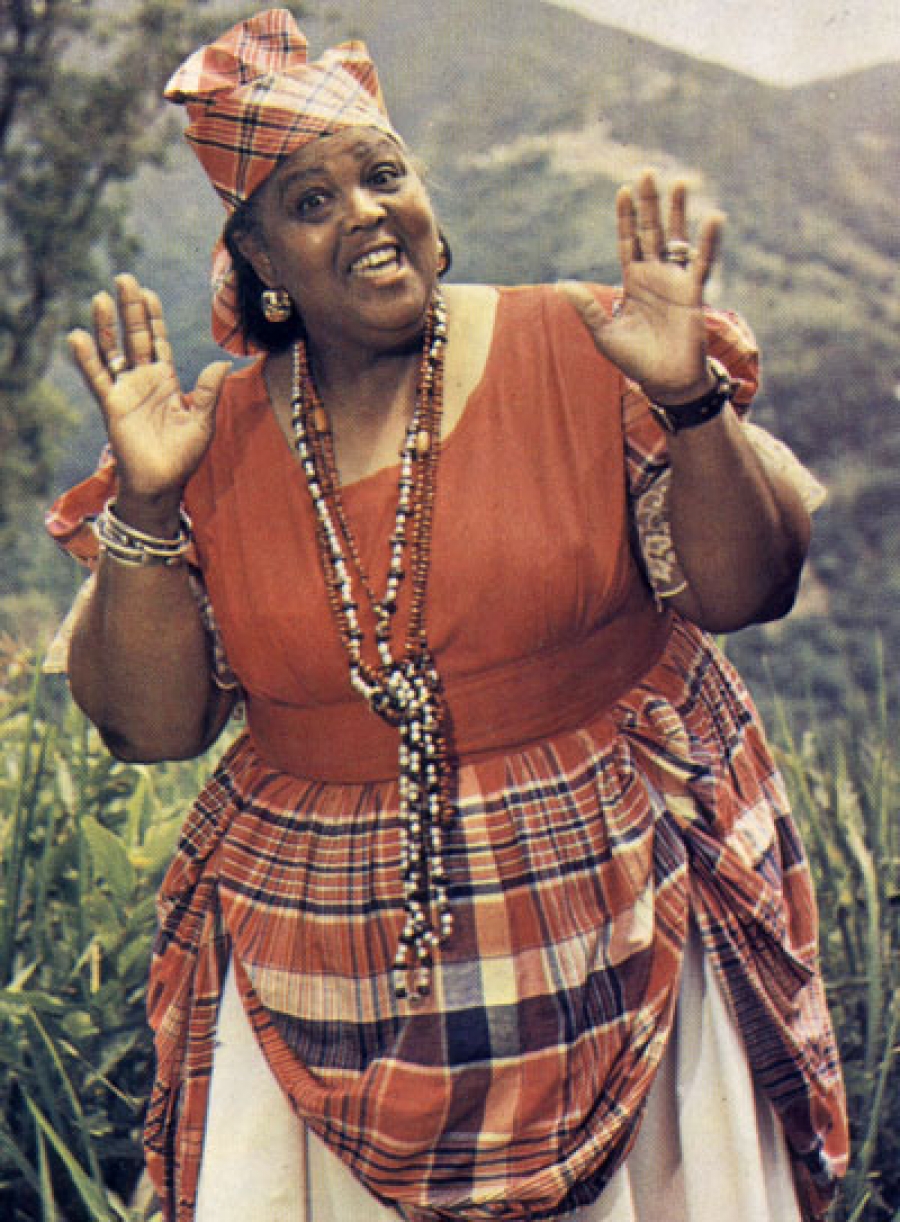The national costume of Jamaica consists of a long full skirted white cotton petticoat usually with a flounce or lace trim at the hem. Over the top of this is worn a full skirted dress made from bandana material; a cotton mix fabric with red white and blue tartan inspired check pattern. The dress usually has a fitted bodice, square neck like and short puffed sleeves. The front skirt of the dress is usually held up in front of each hip with clips or ribbons exposing the petticoat underneath. The ensemble is completed with a head tie in the same fabric as the dress with one, two or three peaks sticking up at the back.

Event/ occasion item is worn
National celebrations and festivities.
Origin of item
The style of costume clearly harks back to a colonial period of Jamaican history. Dress very similar to this style was often worn amongst maids and working class women in British society around the 18th century. However the head tie is of an African tradition and was adapted for the practicality of working in the field. The amount of peaks formed at the back of the head tie is a tradition developed by Caribbean Africans to distinguish the marital status of a woman amongst the other enslaved Africans on the plantation.
Designed by
The costume was apparently developed from an idea created by Beth Lenworth Forbes in the St Ann district of Jamaica in 1953
Meaning behind design
The reasoning for developing a national costume with origins to 18th century English dress in particular is unclear, however the style of the costumes speak volumes about the colonial past of Jamaica.
Materials used
Originally pure cotton was used but as time and fabric economics have changed a polyester cotton mix fabric is more often used. Although the patterning on the fabric is similar to that of other islands it is distinct in that it is of red white and blue colouring, again another reminder of the colonial past of the island. Also despite the fabric originally being made in the Madras region of India unlike any other Caribbean island where the fabric is referred to as Madras echoing the region it was originally made, in Jamaica the fabric is called bandana. The word bandana comes from the Sanskrit word bandhna which means ‘tying’ and may be a literal reference to what the material was being used for.
